...and also preparing for a fundraiser at which I'm performing tomorrow:
And did I mention Apollo After Hours?
My to-do list today only has 14 items on it, of which 6 are checked off already. The actual time it will take to accomplish the remaining eight items varies between 20 minutes (laundry, tonight, essentially a fire-and-forget activity) and four hours (Staging release of the Holden Adaptive Platform).
So, once again, I'm going to shove a bunch of articles to my Kindle:
Now to do the next few things on my list...and watch the thunderstorm outside my office window.
Another big walking day in sunny weather took me up to Bernauerstraße and the Gedenkstätte Berliner Mauer (Berlin Wall Memorial):
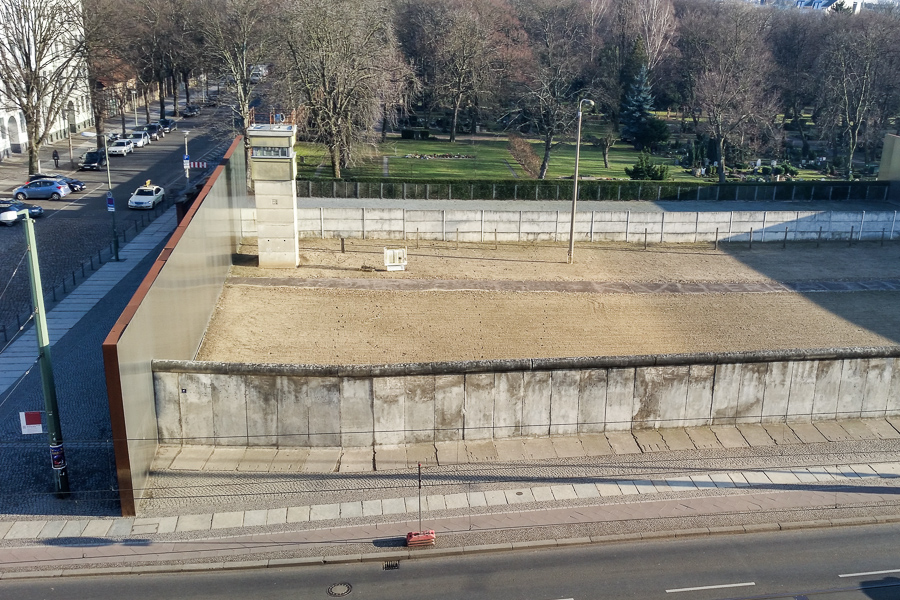
That's a mostly-preserved but partially-reconstructed section of the wall at the corner of Bernauerstraße and Ackerstraße, near the site where the first person trying to flee over the wall was killed. It's hard to imagine that the place I'm sitting now was once in East Berlin, just a few hundred meters from the place by the Wall where Reagan gave his famous speech in 1987.
I ended the walk at the DDR Museum, which outlined what life in East Germany was like from 1945 to 1990. In between I walked down Big Hamburger Street Große Hamburger Straße, in the old Jewish quarter, and stopped to check email (and have some non-German beer) at Sophie'n eck:
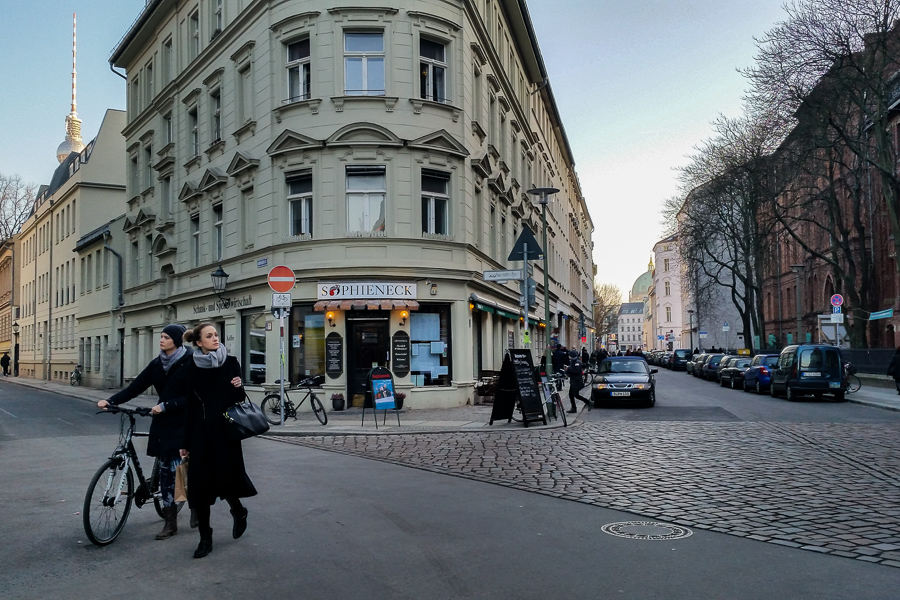
This is just a few meters from the monument to all of Berlin's Jews killed during the Holocaust. More grim history.
It's also fairly close to Museum Island which—wait for it—is an island on which sits nothing but museums (and the occasional cathedral). Here's the view looking downstream from the northern tip of Museums-Insell:
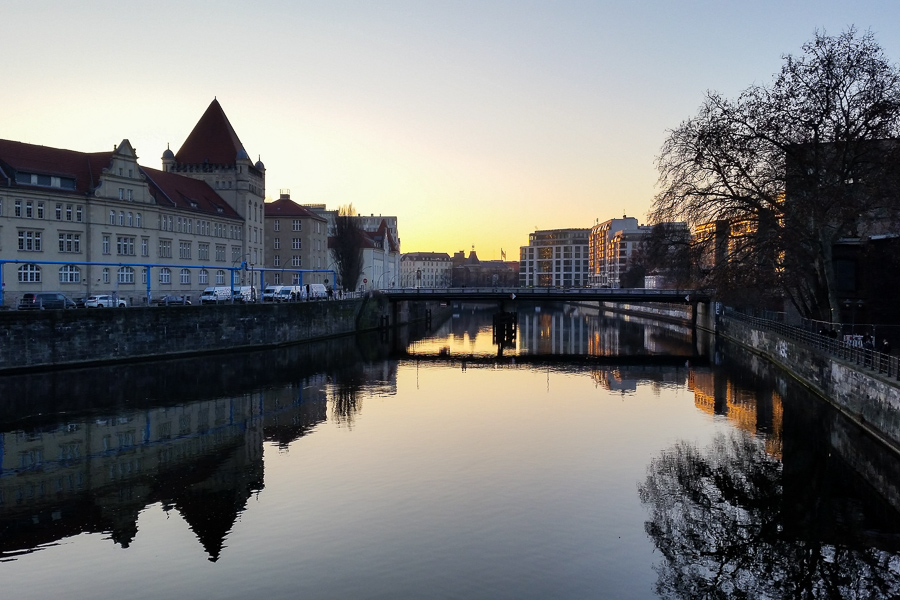
Upstream a bit is the Berlin Dom, which is not a BDSM maneuver but is still big, intimidating, and German:
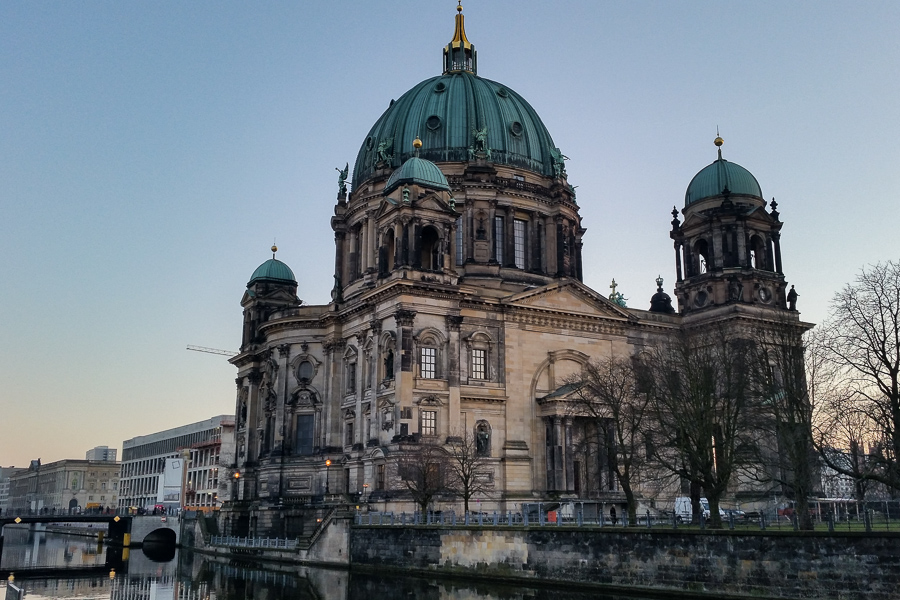
Note that all of these photos are from my mobile phone. I have a few hundred on my real camera, but they're inaccessible right now because I forgot the proper cable. I aim to have some of those photos up by Wednesday or Thursday.
Tomorrow I'm off to my second-favorite city in the world, where I have set aside time and calories to park at Southampton Arms for a couple of hours.
Tonight, though: I've got another 6,000 steps to go. I missed 20,000 yesterday by just a handful, but I have over 100,000 for the week, putting me almost up to 80 km. (I've yet to hit 15 km in a day. Maybe tomorrow?)
Unfortunately, it's my Canon. So even though I promised photos, I'll have to get an old USB cable tomorrow in order to post any.
Fortunately, I have a phone on my camera, so I was able to photograph this Apfelstrudel goodness that I'll be walking off for the rest of the week:

You may have noticed that the photos I've posted lately have unusual aspect ratios and sizes. This is because I have been lazy.
Usually, I upload photos from my camera or phone to my laptop, process them with Adobe Lightroom, and crop them to a pleasing 2:3 aspect ratio. Lately, though, I've just shot them through Google Hangouts from my phone. I have little understanding of Google's choices but they seem to be around the byte count and not around the dimensions.
Here, for example, is a shot of O'Hare Terminal 3 from this morning:
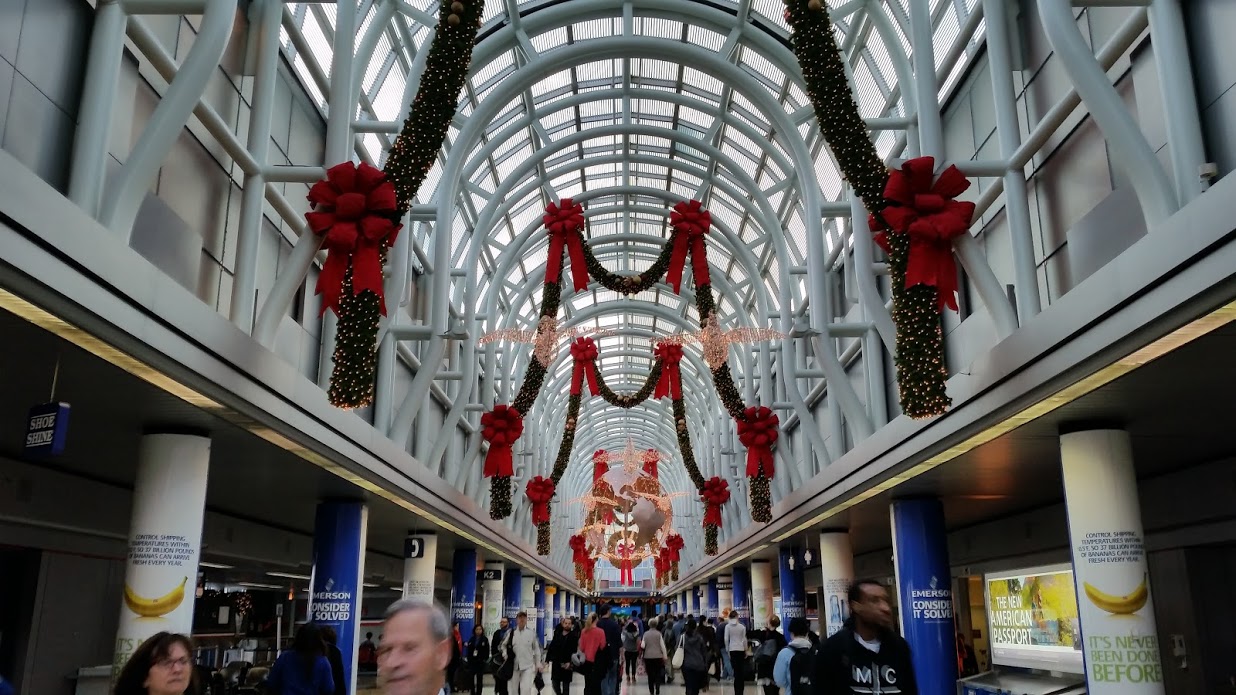
Google did that one at 1236 x 695, at 249 kB. The original is much larger (4 MB), but the same aspect ratio.
I may re-edit the photos later, after landing.
Update: here's the same photo after going through Lightroom:
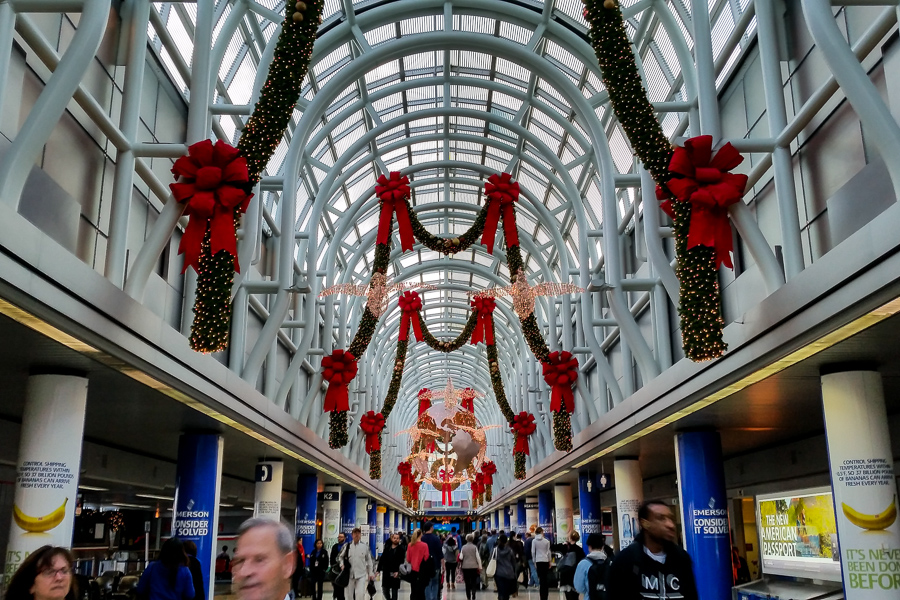
The Atlantic's CityLab blog brings us the work of Ignacio Evangelista, who has photographed European border crossings abandoned after the Schengen treaty came into effect:
Evangelista has photographed many of these checkpoints over the last couple of years. Aptly titled "After Schengen," his project reinforces the suddenness with which many of Europe's border crossings went silent. Brightly colored vehicle gates remain at some boundaries, but they stand open, implying a warmer "Welcome," rather than "Stop!" (the latter can still be found on weathered signs and asphalt).
Despite the irrationality sometimes associated with national borders, the Schengen Treaty is as much an anomaly as it is an achievement. Many nations within the Schengen Area—Austria, Hungary, Poland, Czech Republic, Spain, France, and others—once represented a web of ambitious empires. The sudden abandonment of border crossings displayed in Evangelista's work, therefore, offers a reminder that Europe is in fact enjoying an historic era of peace.
I love borders. I have an idea for a coffee-table book, exploring borders and boundaries at various levels of abstractions, that I may just do someday.
One of these borders will surely be in the Baltics. The weirdest border checkpoint I saw was in Talinn, Estonia, at the ferry terminal. Finland and Estonia are both in the Schengen zone, but 25 years ago they were practically different civilizations.
The Nag's Head, Angel:
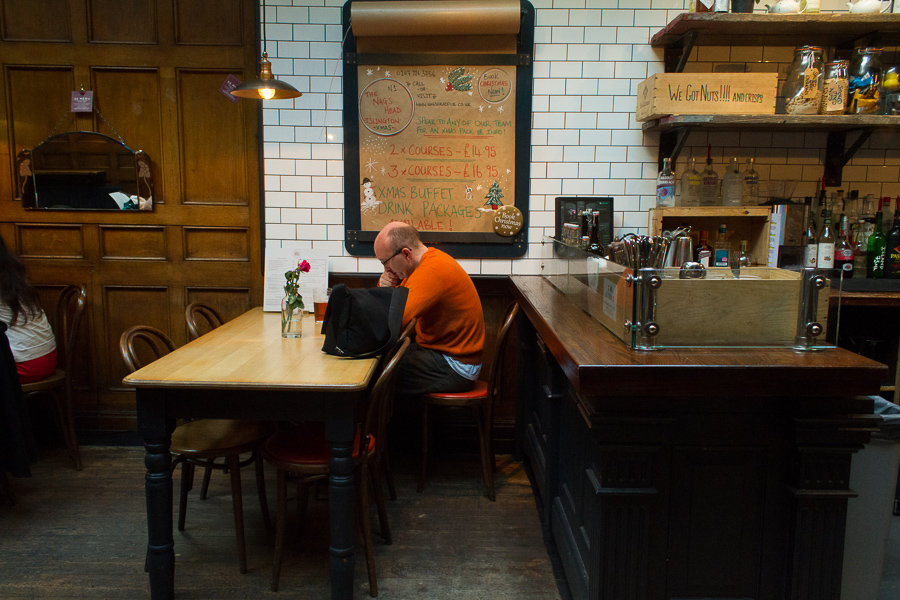
Coincidentally, this pub has the same name as my go-to pub when I lived in Hoboken, N.J., 15 years ago.
CityLabs has a cool pictoral on the evolution of Manhattan's Meatpacking District from the mid-1980s to now:
From the High Line to the expensive shops and restaurants along the old cobblestone streets, everything looks quite different from when Brian Rose first brought his camera to the Meatpacking District. A young photographer in 1985, Rose spent a few days that winter walking around the area in the mid-afternoon, after the meat markets closed and before the sex clubs opened. Right around the time Rose took his photos, one of those clubs, The Mineshaft, was shut down by the city for permitting "high-risk sexual activity" during the worsening AIDS epidemic.
Rose never got around to printing the film from that shoot—until 2012. Blown away by what he saw when compared his photographs to those same streets and buildings today, he decided to re-create each shot. The result is an incredible set of then-and-nows in the new book Metamorphosis: Meatpacking District 1985 + 2013.
The neighborhood's transformation is epic, especially if you spent time in New York over the last 30 years.
And it's 5pm. And I'm still working on Thursday's work. Ex-cellent!
While I'm figuring out what part of the week I missed, read about how a group photographers explored subterranean London.